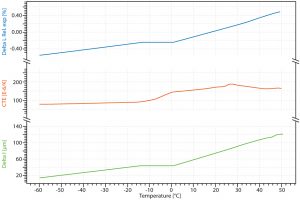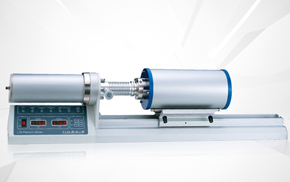DIL L75 VS HT LT – Elastomer – Thermal expansion
Elastomer sample – Thermal expansion / LN2 low temperature / Glass transition
An elastomeric polymer is a polymer sample that has a glass transition temperature that is usually lower than the temperature at which the material is used. The main characteristic of an elastomer is that is usually form stable but flexible and can be deformed under load while reaching its original shape after the load is removed.


